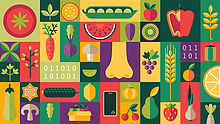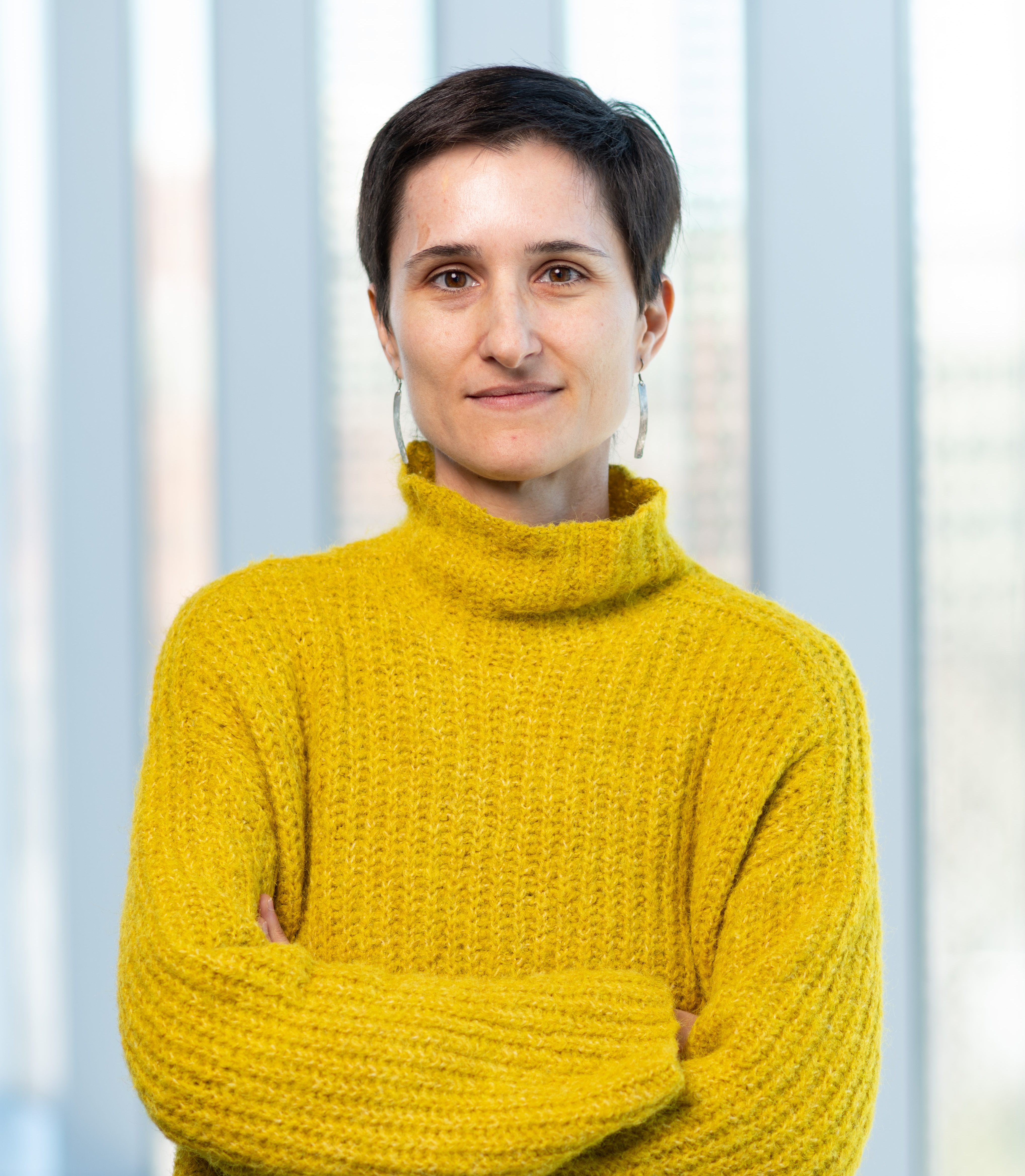Frias-Martinez Part of UMD Effort to Reduce Food Insecurity and Waste

The journey of a lowly surplus tomato from a grower to a hungry family may start with a quantum-powered nose.
This portable sensor created by a University of Maryland engineer uses advanced physics to detect if the tomato is still fresh. The sensor is integrated with a new app from a data scientist across campus that can match the fruit (and a pile of its friends) to a community pantry. If the nose sniffs spoilage, the tomato can be composted or converted into fertilizer or bioenergy through a system developed by a professor of environmental science and technology.
This multidisciplinary team has been awarded $5 million from the National Science Foundation (NSF) to put this food insecurity-fighting system into practice at first locally and eventually on a national scale. Called NourishNet, it will unite a network of producers, donors, distributors and those who are hungry to fill food pantries with fresh produce and reduce food waste.
“This project has several ambitious goals, but our main focus is to deploy NourishNet on a national scale to increase food accessibility for all populations and reduce spoilage to build a more sustainable and responsible food system,” said Professor Stephanie Lansing of the College of Agriculture and Natural Resources and lead researcher on the project.
In the U.S., 34 million people are food-insecure, she said. And while the country produces enough food to feed its population, 35% of that food is wasted, resulting in 14% of all greenhouse gas emissions and creating 25% of its landfill content.
The NSF Convergence Accelerator program first awarded the interdisciplinary team $750,000 in January 2023, and now it plans to focus on the sale and distribution of its “toolbox,” and expand consumer education.
The first step is the Quantum Nose, an electronic sensor developed by Cheng Gong, an assistant professor of electrical and computer engineering and a Quantum Technology Center fellow, that can detect the spoilage rate of perishable food. (It was recognized in 2022 as UMD’s Invention of the Year.)
“These sensors are built based on atomically thin quantum materials, which are extremely sensitive to miniscule amount of influencing factors, including the gas molecules nearby emitted by spoiled food,” he said. “Based on such information, we can evaluate the life span and freshness of food.”
The second part is the app and platform, FoodLoops, which focuses on engaging consumers, recovering and redistributing surplus food, and providing greenhouse gas emission data to government and institutions to allow for data-driven decision-making. For example, it connects small farmers within the food ecosystem with nonprofits and their clients; people who need food can see a map with the pantries where they can search for produce they need. If those pantries don't carry those fruits or vegetables, they can add them to a wish list, and the food pantry will be notified. 
“Working on projects like this is rewarding because of the direct impact that we can have in food-insecure communities that are oftentimes left out of decisions made around food distribution, as well as in supporting decision makers understand better the complexities around food access, food distribution and food recovery,” said Vanessa Frias-Martinez, an associate professor of information studies with an appointment in the University of Maryland Institute for Advanced Computer Studies. She will work with the food recovery software company Chowmatch in the development and testing of the FoodLoops app developed by the NourishNet team.
Finally, in cases where the condition of the food doesn’t allow it to be distributed and eaten, composting and anaerobic digestion systems will convert it into fertilizer and renewable bioenergy. At the end of the process, app users can view how much greenhouse gas they kept out of the atmosphere through their decisions to donate recoverable food, or to send it for composting or digestion.
The three-year project’s initial area of focus will be English- and Spanish-speaking food-insecure individuals in Prince George’s County, with the help of the Prince George’s County Food Equity Council, its first partner. Besides Chowmatch, new partners include the LindaBen Foundation, SCS Engineers and Well Said Media.
"A collaborative approach between academic researchers, industry, government, nonprofits and other communities is important to optimize the production of food and connections between farmers and consumers, researchers and other stakeholders," said Douglas Maughan, head of the NSF Convergence Accelerator program.
—This story was republished from an article in Maryland Today
